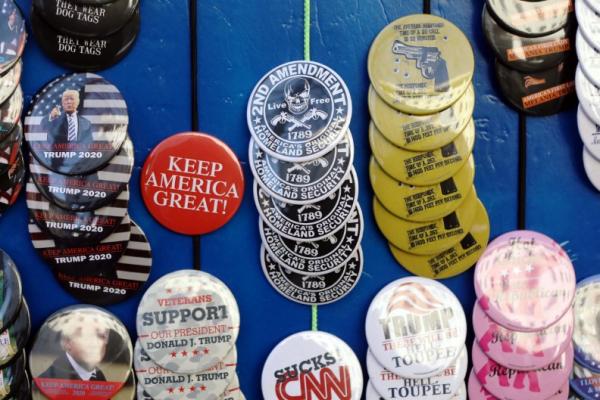On Jan. 20, 22,000 protesters from all over the U.S. came to Richmond, Va., to show their support for the right to bear arms and their allegiance against sensible gun reform.
A few weeks before this rally, Virginia’s delegates and senators passed three gun measures that would impact the landscape. Those bills included: SB 35, SB 69, and SB 70.
The passage of these bills prior to the Jan. 20 demonstration heightened the anger that was already present. It communicated that this issue’s roots stretch deeper than party lines, into layers of fear, selective freedom, patriarchy, and whiteness.
While this protest led Gov. Ralph Northam to place the city under a state of emergency as a measure of precaution, many Virginia residents, especially black and brown citizens, were still concerned that a protest of militarized celebration happened at the state capital.
We must carefully observe and acknowledge that many black and brown people consistently witness the senseless deaths of individuals at the hands of racists, supremacists, and those inflicting direct harm on Christian and non-Christian houses of worship. This point is also evident through police brutality, the assumption that black and brown men possess certain “dangerous” physical characteristics, presumption that our neighborhoods are dangerous, and militarized responses by law enforcement in Ferguson and Baton Rouge.
Sure, white Americans are not the only people with firearms, yet most often they are seen committing mass atrocities and crimes of hate in this nation.
And yet, the American media consistently continues to stereotype black people in the U.S. as “violent,” and often does not hold white people accountable to the same standards.
This stereotypical representation also gives pro-gun groups ammunition to further stoke white fear, perpetuates the falsehood that all black communities are crime ridden, and pushes the narrative that Democrats are “gonna take our guns away.”
This mode of “fake news” stimulates and promotes the aggression displayed in Richmond, an aggression not necessarily fully rooted in "rights,"but privilege and power — a privilege and power historically evident through white conservative bureaucrats wielding the concerns of their constituents, while aiming to contain the breadth of collective liberation for minority citizens.
This gun legislation fight is not solely rooted in rights, but intimately nestled in white fear and the longing to maintain power as this nation’s majority will become a minority.
This “right” is one most readily associated with white men in rural and suburban communities across the nation. Often times, it is these entities that work in concert to ensure they do not lose the privilege of carrying, purchasing, and passing down weapons, while the other is enabled to maintain power through securing the support of gun owners and manufacturers with each election cycle. Lost in this discourse is the complexity of unpacking the repercussions of solely seeing the second amendment as infallible literature, absent of its context and the inability to intentionally juxtapose it within our current culture both politically and socially. Therefore, bringing in the elements of power and privilege into the discussion of gun rights, as well as protective measures to ensure the safety of citizens is necessary.
These grabs for power are not new. It was Black Panther Party in 1967 who boldly protested on the steps of the California statehouse armed with guns and announced, “The time has come for black people to arm themselves.”
This was their response against what they believed to be a terroristic United States government and police force. The subsequent response by California was the Mulford Act, signed into law by the governor at the time, Ronald Reagan, and the Gun Control Act of 1968, “which adopted new laws prohibiting certain people from owning guns, providing for beefed up licensing and inspections of gun dealers and restricting the importation of cheap Saturday night specials [pocket pistols] that were popular in some urban communities.”
This was not about safety or the second amendment, but power. California legislators and others around the nation ensured that only certain people would have access to weapons on the basis that one was a greater threat to society than the other. These stereotypes and selective reactionary measures are true to America, and it continues today.
As Dr. Faith Harris said to me last week:
“What creates peace and security can’t come from armed citizens, to the teeth, inflicting fear by their presence and stance. We have to get to a place of thinking about community. We must get to the point of considering the continued peace of community. What [would] makes me feel most secure and at peace is knowing I’m in a community working towards my goodwill and that of others, all being contributors and benefactors of [the] peace. A peace not established through fear and trepidation, but through whole participation as committed members of society.
Got something to say about what you're reading? We value your feedback!




